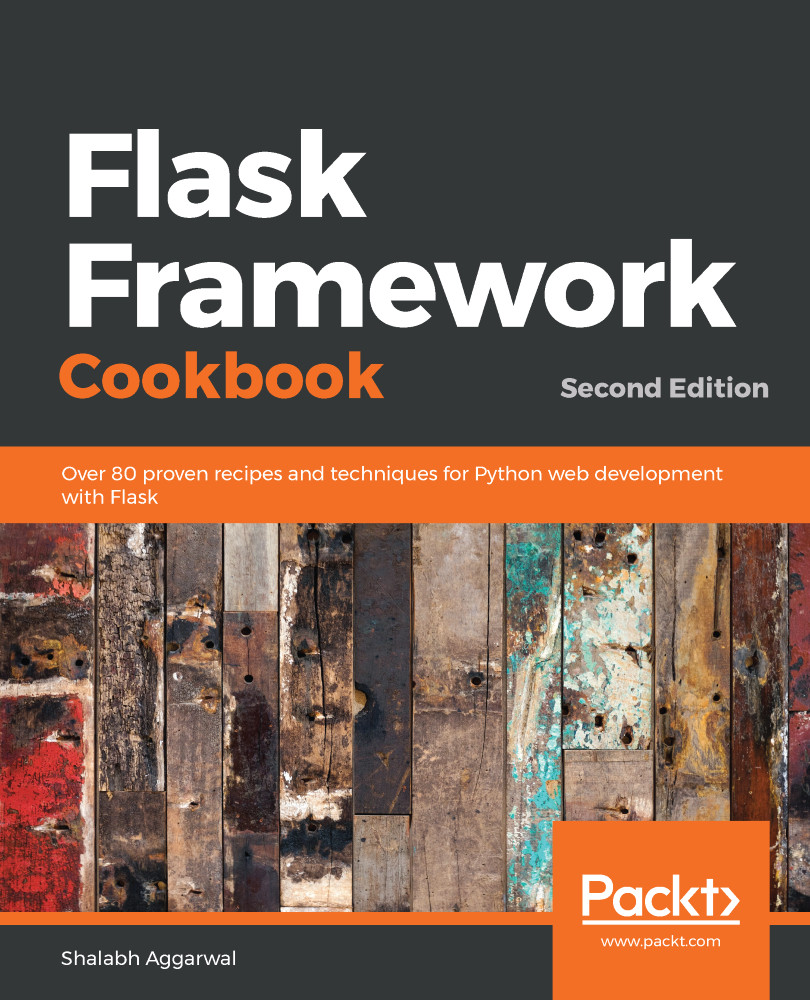An Application Programming Interface (API) can be summarized as a developer's interface with the application. Just like end users have a visible frontend user interface with which to work on and talk to the application, developers also need a user interface to the application. Representational State Transfer (REST) is not a protocol or a standard. It is just a software architectural style or a set of suggestions defined for writing applications, the aim of which is to simplify the interfaces within and without the application. When web service APIs are written in a way that adheres to the REST definitions, then they are known as RESTful APIs. Being RESTful keeps the API decoupled from the internal application details. This results in ease of scalability and keeps things simple. The uniform interface ensures that each and every request is documented.
-
Book Overview & Buying

-
Table Of Contents

Flask Framework Cookbook - Second Edition
By :

Flask Framework Cookbook
By:
Overview of this book
Flask, the lightweight Python web framework, is popular thanks to its powerful modular design that lets you build scalable web apps. With this recipe-based guide, you’ll explore modern solutions and best practices for Flask web development.
Updated to the latest version of Flask and Python 3, this second edition of Flask Framework Cookbook moves away from some of the old and obsolete libraries and introduces new recipes on cutting-edge technologies. You’ll discover different ways of using Flask to create, deploy, and manage microservices. This Flask Python book starts by covering the different configurations that a Flask application can make use of, and then helps you work with templates and learn about the ORM and view layers. You’ll also be able to write an admin interface and get to grips with debugging and logging errors. Finally, you’ll learn a variety of deployment and post-deployment techniques for platforms such as Apache, Tornado, and Heroku.
By the end of this book, you’ll have gained all the knowledge you need to confidently write Flask applications and scale them using standard industry practices.
Table of Contents (15 chapters)
Preface
 Free Chapter
Free Chapter
Flask Configurations
Templating with Jinja2
Data Modeling in Flask
Working with Views
Webforms with WTForms
Authenticating in Flask
RESTful API Building
Admin Interface for Flask Apps
Internationalization and Localization
Debugging, Error Handling, and Testing
Deployment and Post-Deployment
Microservices and Containers
Other Tips and Tricks
Other Books You May Enjoy

